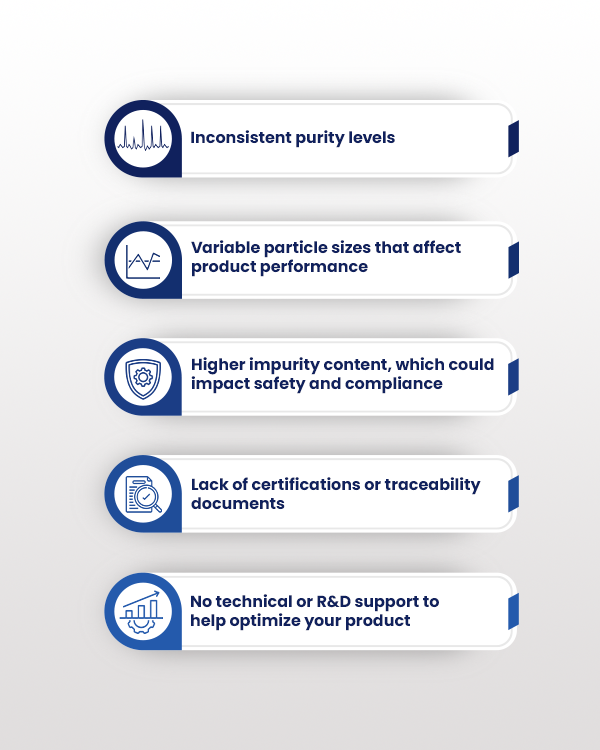
In manufacturing, the raw materials you choose aren't just building blocks; they're the backbone of your product’s performance and consistency. Zinc oxide is one such material, playing a critical role across a wide range of industries, including rubber, tires, cosmetics, pharmaceuticals, agriculture, and paints.
But here’s where many manufacturers go wrong: they treat zinc oxide like a basic commodity, prioritizing price or quantity over essential factors like quality, consistency, and supplier expertise. It’s a short-sighted decision that often leads to long-term costs.
Let’s dive into why this mistake happens, what the real costs are, and how making a smarter choice can boost your manufacturing process.
Before we get into the mistake, let’s take a quick step back. Zinc oxide is used in tons of everyday products. It strengthens rubber tyres, helps make ceramics and glass, provides UV protection in cosmetics, boosts animal health in feed, and even improves paint durability.
But the performance of all these products depends heavily on the quality of the zinc oxide used. It’s not just about “zinc oxide” as a generic term. Differences in purity, particle size, and manufacturing process mean that not all zinc oxide is created equal.
So, the supplier you choose affects the consistency, effectiveness, and even safety of your finished products.
Here’s the reality: many manufacturers look at zinc oxide as a low-cost raw material to tick off their procurement list. They focus on the cheapest price or the supplier that can deliver the highest volume quickly. And why not? Everyone wants to keep costs low.
But zinc oxide quality varies widely. A lower price might mean:

These hidden costs come back to haunt manufacturers in the form of quality issues, customer complaints, regulatory problems, and wasted materials.
Buying zinc oxide isn’t just about selecting the right grade; it’s about choosing a supplier who can support your process beyond the material itself. In today’s manufacturing landscape, where even small inefficiencies can impact quality or cost, having access to technical expertise can make a significant difference.
From customizing grades to suit specific applications, to resolving unexpected production issues or improving overall efficiency, R&D and technical support play a critical role in how well the material performs on the ground.
A supplier that actively engages with your challenges doesn’t just deliver zinc oxide, they help you get more out of it. That kind of partnership can turn a raw material into a strategic advantage.
When it comes to sourcing zinc oxide or any critical material, certifications aren’t just checkboxes. They signal trust, quality, and global readiness.
Partnering with a certified supplier helps you avoid regulatory headaches, unlock smoother access to export markets, and accelerate your product’s journey from factory floor to customer hands.
So, what should manufacturers do to avoid falling into this trap?
Zinc oxide isn’t just another line item on your bill of materials; it’s a key ingredient that drives performance. When it’s treated like a commodity, it might look cheaper upfront, but the long-term trade-offs in quality, consistency, and efficiency can cost far more.
At Rajshila, we bring over 40 years of hands-on experience to the table, delivering high-purity, certified zinc oxide backed by expert R&D and dependable supply. We're not just a supplier, we’re your trusted partner in achieving better outcomes.
Whether you’re in rubber, pharmaceuticals, paints, or agriculture, our goal is simple: help you get more value, more stability, and more performance from every batch.
Let’s stop chasing just the lowest price and start building smarter, stronger products together.